How do you Grow Bluebells?
This can be a difficult question to answer for beginner gardeners because of numerous factors including climate, soil, and experience level.
This article will help solve this problem and give beginner gardeners Easy-to-Follow Steps on growing Bluebells ANYWHERE.
And I recommend scrolling to the bottom of this page to find answers to the 9 most frequently asked questions most gardeners have when growing Bluebells.
Step #1 Plant One of These 3 Types of Bluebells
When buying and planting one of these 3 types of bluebells you should make sure that the bulbs are firm, unblemished, with few or no tears to the outer coating.
I am recommending three specific types of Bluebells that are simple to grow and care for regardless of your experience.
Best of all is that all of these Bluebells are perennials and beautiful!
A) English Bluebell
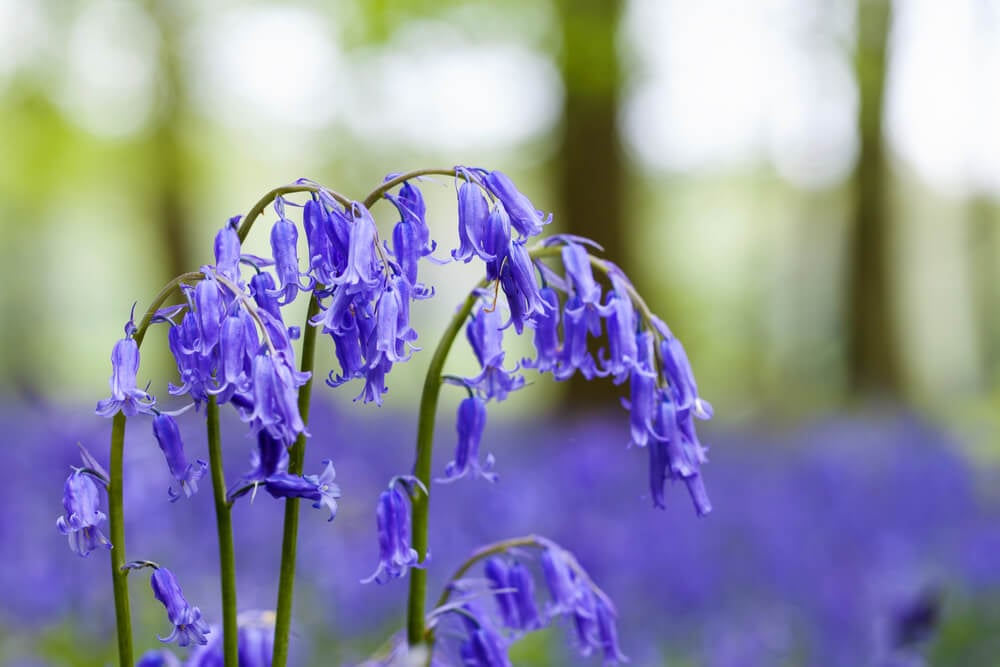
- Hardiness Zone: 3 – 8
- Length & Width: 1 foot x 1 inch
- Watering Needs: Average
- Sun Exposure: Full
- Bloom Time: Late Spring
English Bluebells are also known as British Bluebells and are native to England and France.
This type of bluebell has a deep-blue color and grows to be about a foot tall and has bell-shaped petals that curl out at the end.
Not only that, but this type of bluebell blossoms in early to mid spring and has a strong, fragrant smell to it.
B) Spanish Bluebell
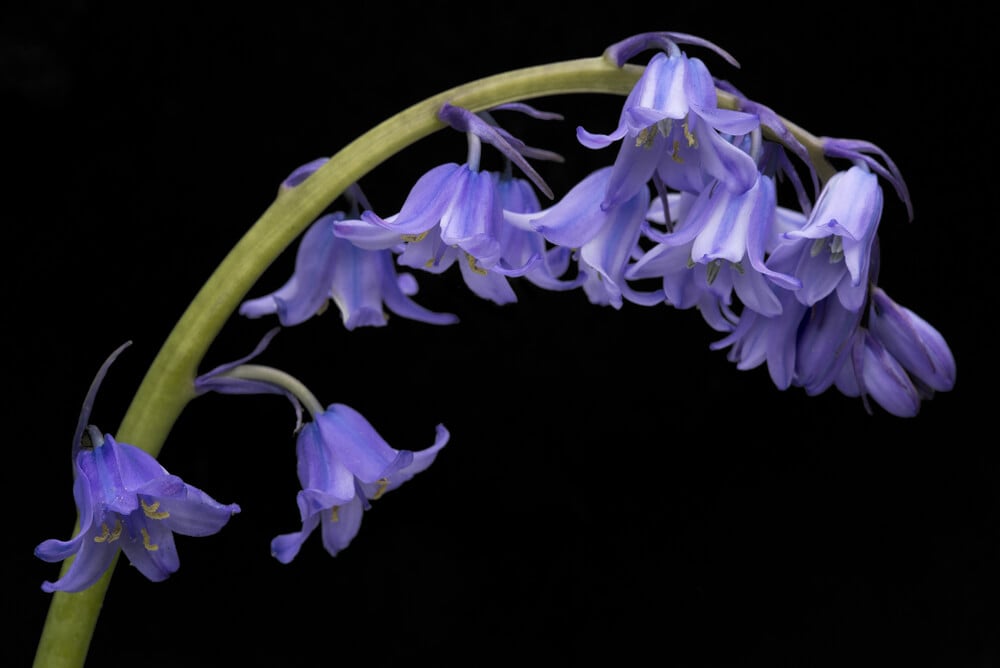
- Hardiness Zone: 3 – 8
- Length & Width: 1 foot x 1 inch
- Watering Needs: Average
- Sun Exposure: Full
- Bloom Time: Late Spring
The Spanish Bluebell is known as a late-blooming flower that is very similar to the English Bluebell flower.
This type of bluebell typically is 1 foot tall, but can grow almost 3 feet tall.
The flowers of the Spanish Bluebell grow in clusters and point up toward the sky. Not only this, but they blossom in colors of blue, white, and pink.
C) Virginia Bluebell
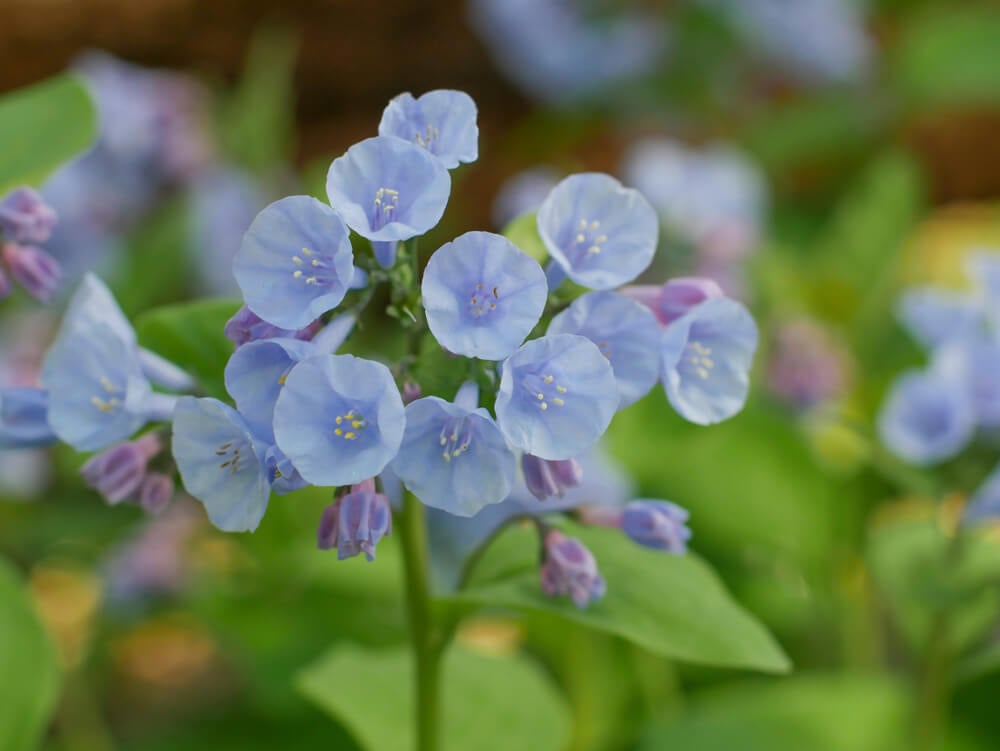
- Hardiness Zone: 3 – 8
- Length & Width: 1 foot x 1 inch
- Watering Needs: Average
- Sun Exposure: Full
- Bloom Time: Mid Spring
The Virginia Bluebell is my favorite bluebell to grow in my flower garden and is blossoms in mid-spring.
This type of bluebell is native to to Eastern North America and can be found along rivers and streams.
The Virginia Bluebell can grow up to 2 feet tall, blooms with beautiful light-blue colors, and has a soft, fragrant smell.
Step #2. How to Grow Bluebells from Bulbs
Bluebells are a beautiful flower that blooms in early to mid-spring.
Unlike conventional thinking, Bluebells are perennial flowers.
Most flower gardeners think Bluebells are annual flowers because hybrid bluebells can become weakened perennials over time.
Step 1 – Plant Your Bluebell Bulbs in the Fall
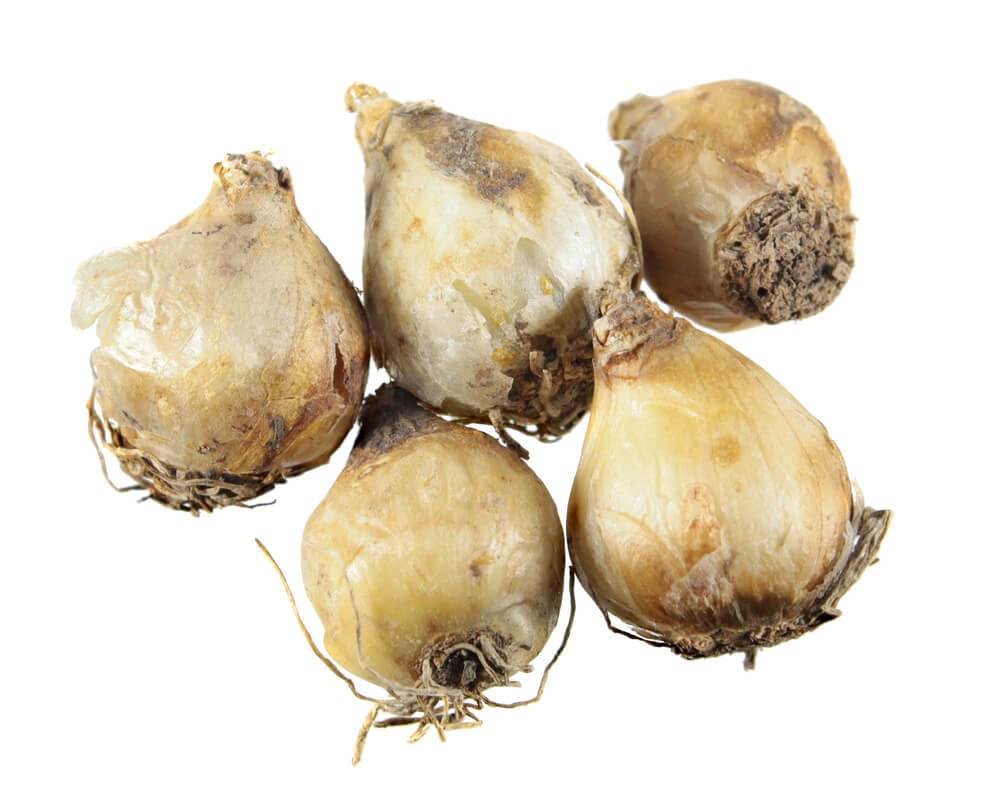
First, make sure you buy your appropriate Bluebells on Amazon on another reputable garden vendor.
Plant your bluebell bulbs in the fall when your soil has cooled off & the temperature is between 40 to 50 degrees Fahrenheit. Plant your bulbs before the first frost!
Take the temperature of your soil and ensure that it will stay below 60 degrees for 12 weeks or think about planting your bluebells in pots.
- Hardiness Zones 3 – 5: Plant in September
- Hardiness Zones 6 – 7: Plant in October
- Hardy Zones 8 – 9: Plant in December
*Find Your Hardiness Zone HERE*
Step 2 – Prepare Your Soil THIS Way!
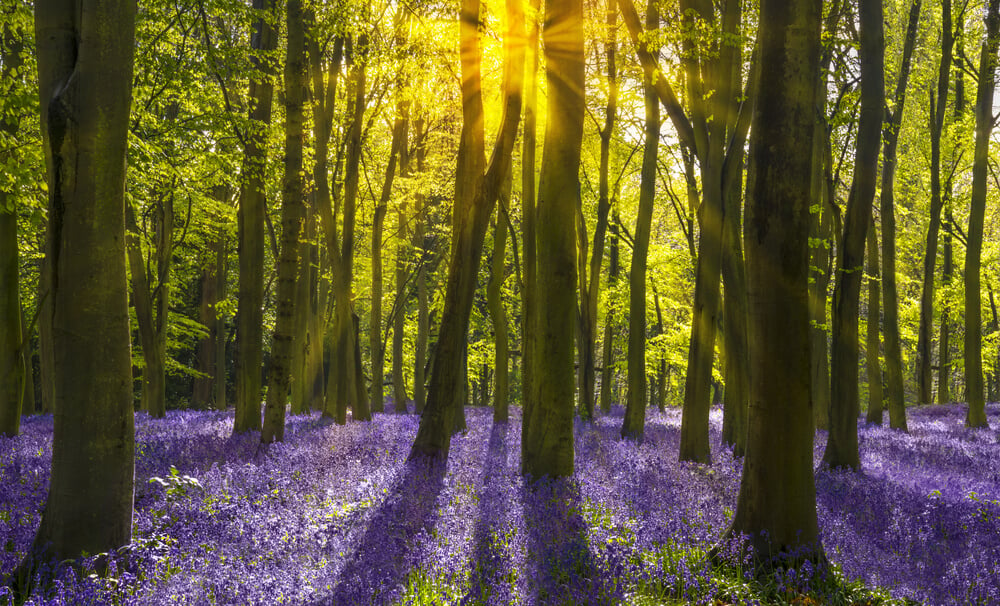
Locate the area of your flower garden or yard where you want to plant your bluebells.
- Bluebells do best in an area that receives partial to full afternoon sun.
- The soil should be well-draining and should be neutral to slightly acidic (6.0 – 7.0 pH level).
- The flower garden should be well protected from wind and heavy rain.
Mix 3 inches of Flower Garden Soil to the top 6 inches of your garden soil.
Step 3 – Simply Plant Your Bluebell Bulbs



To have the most success planting your bulbs you should simply dig a hole 8 inches deep and plant 10 bluebell bulbs next to each other.
*Make sure the Bluebell Bulbs “pointy” part is facing up*
Then mix flower fertilizer (that has a 10-10-10 NPK ratio) in the hole (according to the the instructions). And then fill the holes with your flower and garden soil mix.
Next, water your bluebell bulbs for 15 seconds. This will help promote the start of root growth. Continue to water your bulbs for 15 seconds once a week for the first month.
Then continue this process for as many bulbs as you want to grow. Make sure to spread each set of 10 bluebell bulbs 4 inches apart.
Step 4 – Do THIS in the Winter
In the beginning of winter you will want to mulch your flower garden bed.
After you mulch the flower garden bed do nothing else to your bluebll bulbs the rest of winter.
Step 5- And do THIS in the Spring
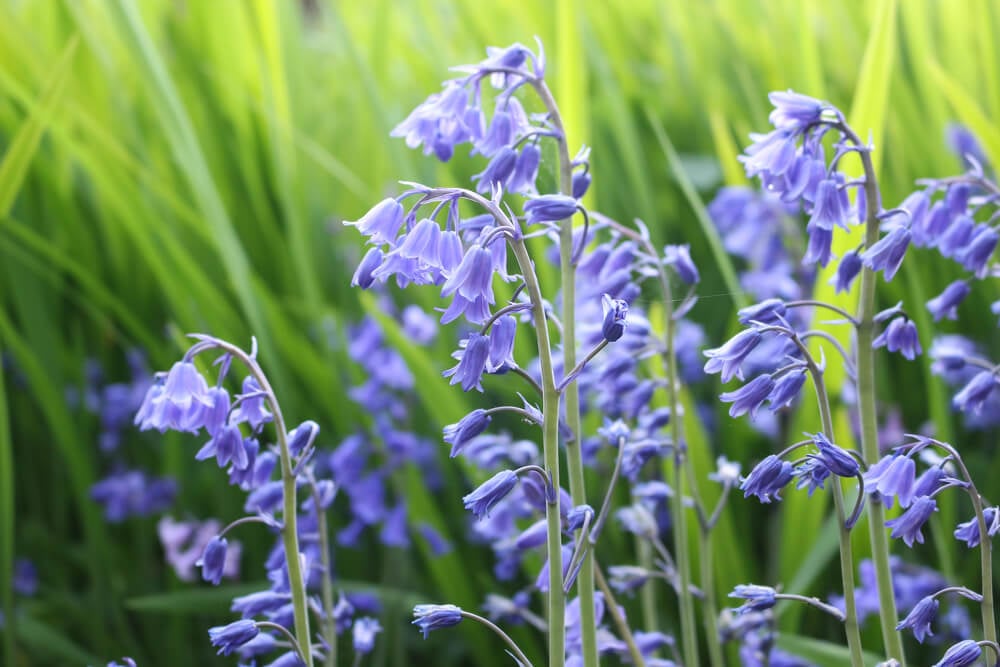
Once the year becomes spring and your bluebells grow leaves then you should add flower fertilizer again.
Then water your bluebells once a week until your bluebells bloom.
As soon your bluebell petals fall off the flower deadhead it.
And make sure to keep your leaves on the flower for 6 weeks while your flower absorbs and retains energy for next year’s bloom.
Step 6 – Maintain minimal maintenance in summer
Once it becomes summer you should cut the stem and leaves of your bluebells where it meets the soil.
Do not water your bluebells in the summer. Do not fertilize your bluebells in the summer. Simply leave your bluebells in the ground all summer.
Frequently Asked Questions (9 Questions)
#1. How Do You Grow Bluebells in Pots?
If you are not able to plant your bluebell bulbs in an area your garden or yard, or if your soil will not stay below 60 degrees Fahrenheit then you should plant your Bluebells in a container.
To have the most success planting Bluebell Bulbs in pots you should do the following:
- Bury your bulbs in a container with 8 inches of Flower Garden Soil over it.
- Make sure the “pointy” end of the bulb is facing up
- Immediately water your bluebell bulbs for 15 seconds
- Before the first frost of the year move your container to an area of your property that is cool and dry. Keep it here throughout winter
- Once you notice green growth emerging in the winter move your container into a sunny area and begin watering it once a week.
- Once your bluebell petals fall off you will want to deadhead your flower.
- Let the green growth of your plant remain for 6 weeks. Then cut it and your stem where it meets your soil.
#2. How Do I Water My Bluebells?
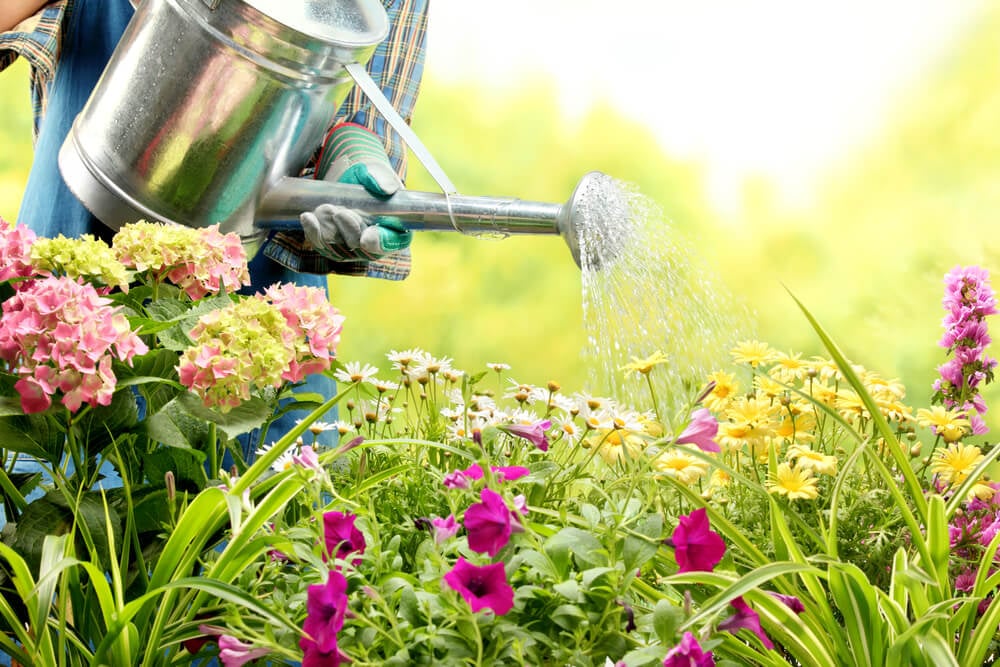
You should water your Bluebells three different ways.
- Immediately after you plant your bluebell bulbs you should soak the soil for 15 seconds
- Continue watering your bluebell bulbs once a week for the first month and then don’t water until the spring
- Begin watering your bluebells once a week once green growth returns in the spring
#3. How Do I Feed My Bluebells?
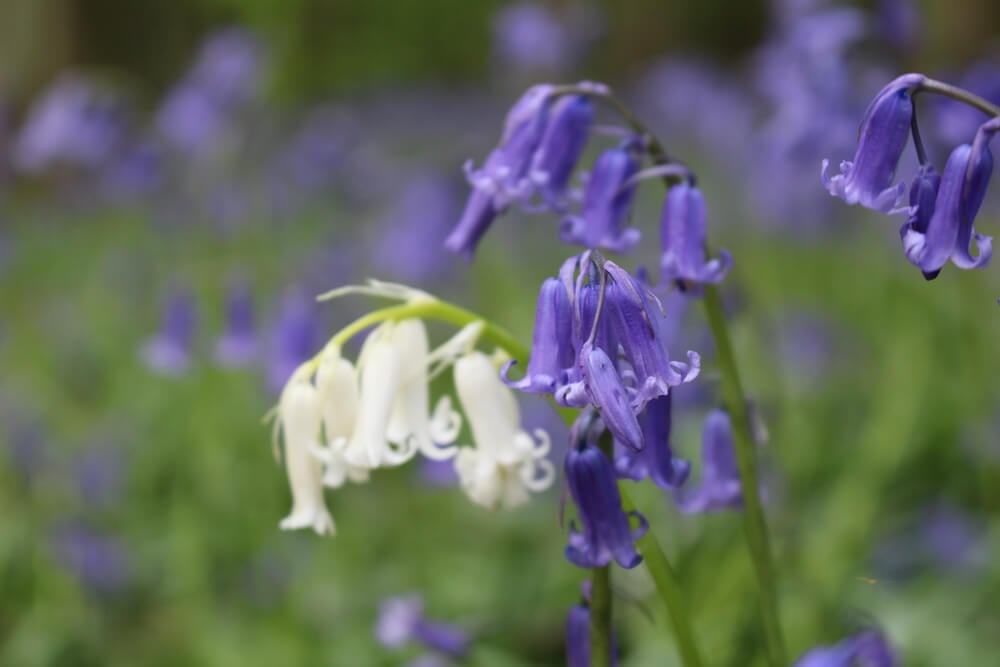
To properly feed your bluebells with fertilizer you should wait until the bluebell flowers have faded and begun falling off your flower.
To have the most success use Bluebell Fertilizer. This will help your bluebells store nutrients properly for the next season.
For best results, simply follow the instructions on your fertilizer product.
#4. How Do I Cut Bluebells?
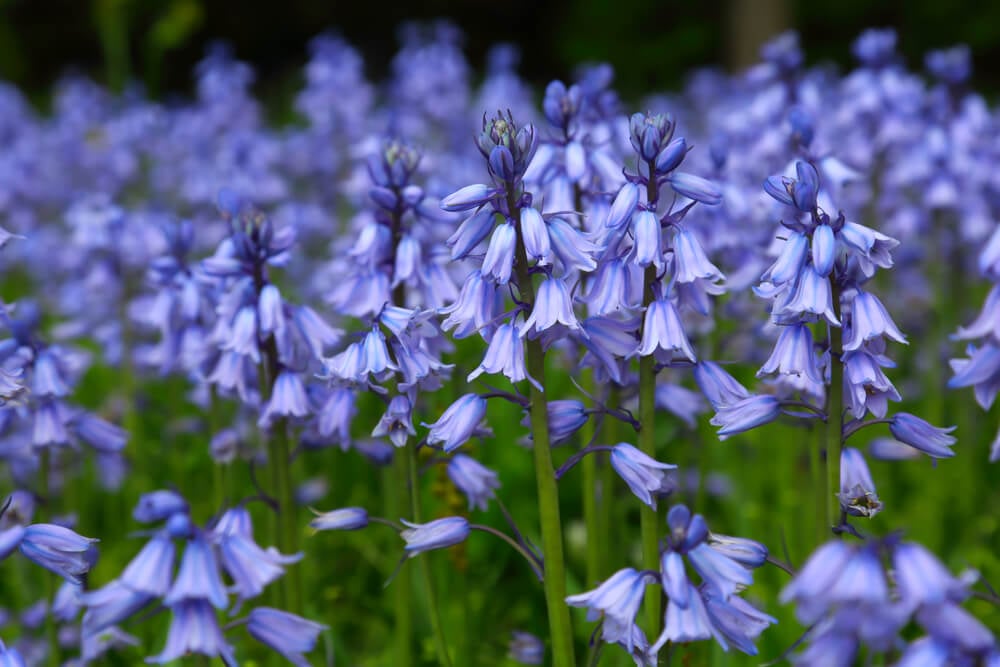
If you want to display your bluebells indoors then cut bluebells when the flowers have grown, but not blossomed. It is okay if the flower bud is slightly green, but should have color.
Place the cut bluebell in a vase with water at room temperature. Every few days change your water.
If you want your bluebells to last longer in the vase then you should add Miracle-Gro for Fresh Cut Flowers.
#5. How Do I Protect my Bluebells from Pests
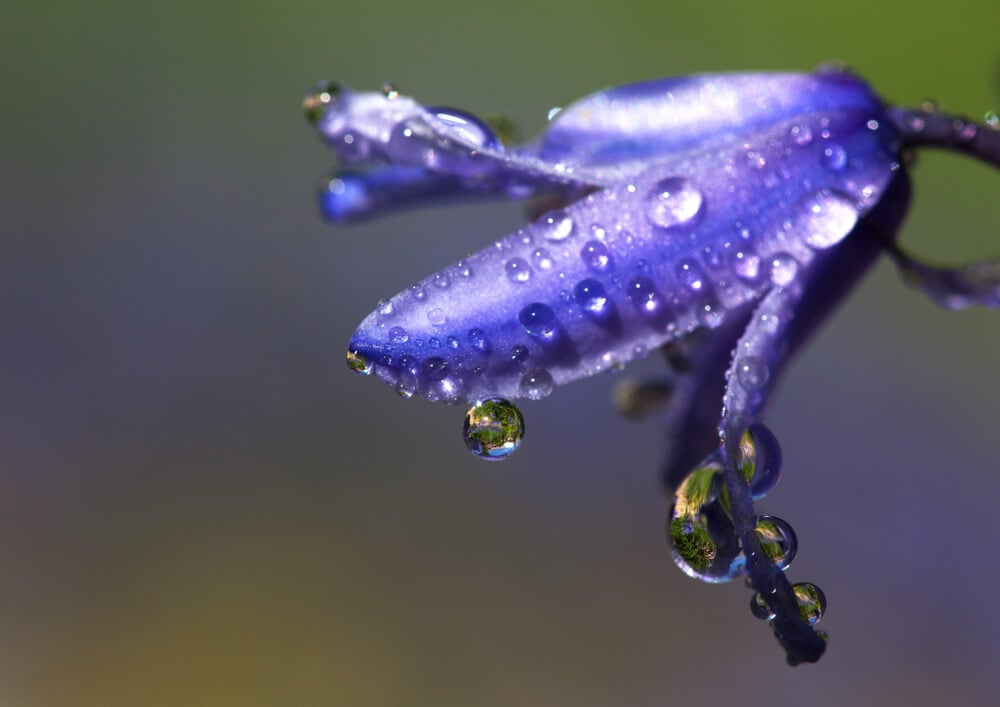
The biggest threat to your bluebells is deer, squirrels, and chipmunks. This is both when your bluebells are growing and blooming.
To prevent your bulbs from digging up place bird netting over the ground where they are planted.
If you are trying to prevent deer then you should use deer repellent. If this does not work then grow your bluebell bulbs in pots and containers out of the deer’s reach.
#6. How do I Prevent Common Bluebell Diseases
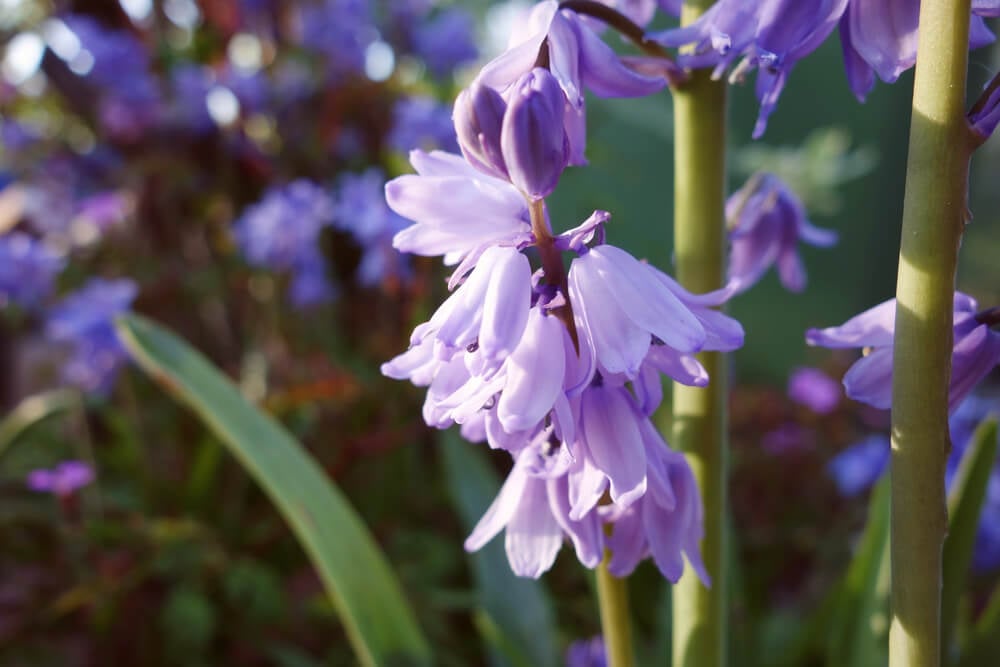
The most common bluebell diseases and harmful insects are gray mold, slugs, snail, aphids, nematodes, and bulb rot.
You can help prevent these diseases and harmful insects by using a fungicide spray and an insecticide spray in early spring as green growth begins to emerge.
#7. What are the Best Uses for Bluebells?
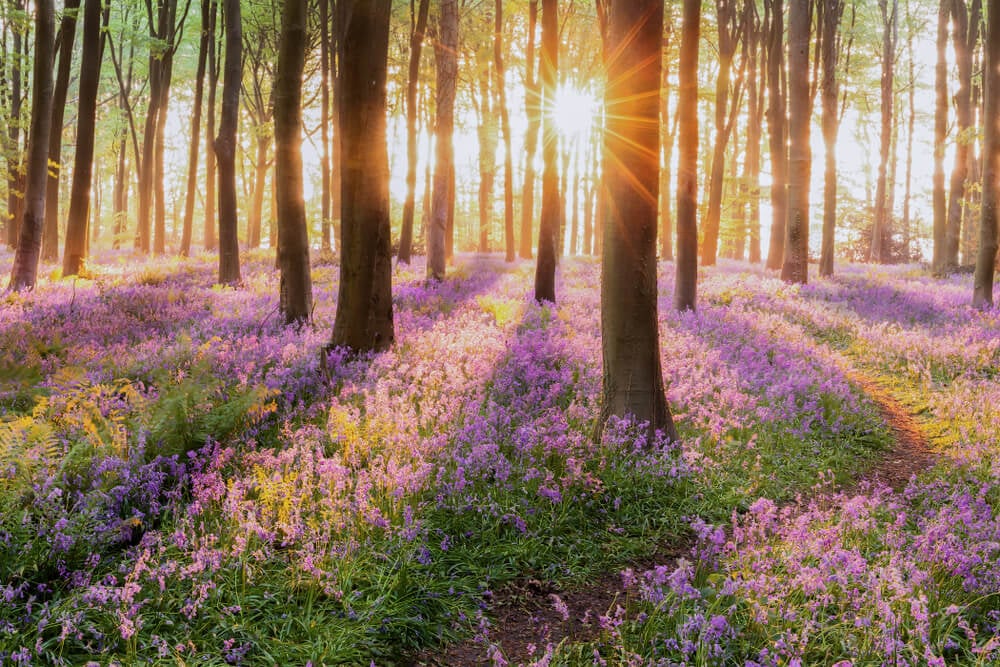
Bluebells are best used for indoor display, but can also add color to raised garden beds, container gardening, or even in your traditional flower garden.
Bluebells can complement columbines, azaleas, lilacs, daffodils, crocus, and even hyacinths.
#8. What types of Bulb Should I buy?

Purchasing Bluebell Bulbs is a much easier task than say vegetable or herb seeds, where you have to worry about GMOs, Organic, Heirloom, etc.
When buying bluebell bulbs you should stick to hybrid or heirloom. These will give you the best success in growing Bluebells.
Hybrid Bluebell Bulbs are weakened perennials that may or may not come up every year.
Heirlom Bluebell Bulbs are perennial bulbs that come up yearly but have a higher risk of contracting a disease, harmful insect, or fungus.
Just as important is where you buy your bulbs from. I recommend buying your seeds from Amazon. This will provide you with the best price and quickest delivery.
#9. What Type of Gardening Pot Should I Buy?

I recommend buying one type of pot.
Buy a 5-gallon pot.
- This is essential if you want to allow your bluebells to grow to its fullest. It is also important if you want to continue to grow your bluebells outside.